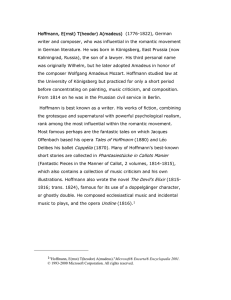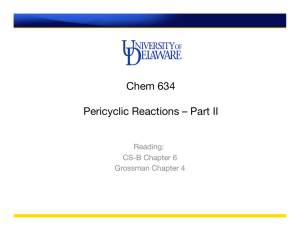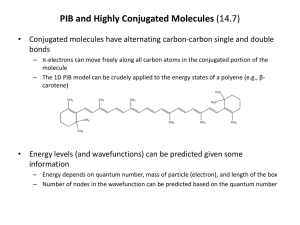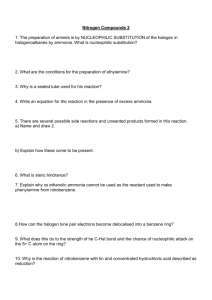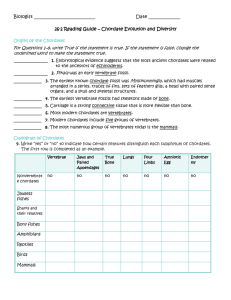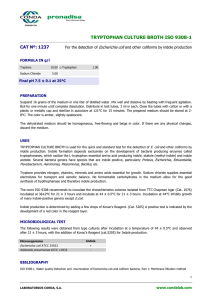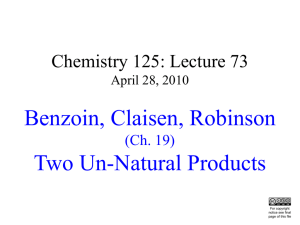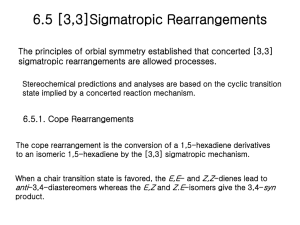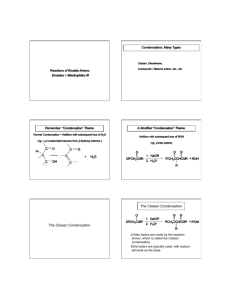Science
advertisement
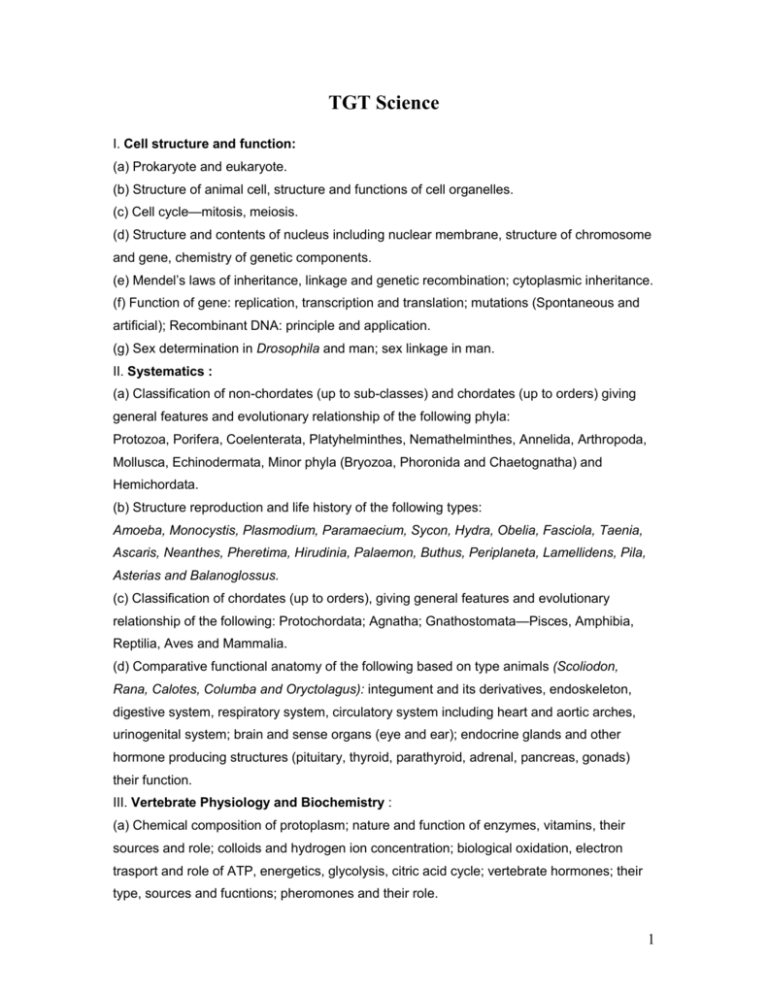
TGT Science I. Cell structure and function: (a) Prokaryote and eukaryote. (b) Structure of animal cell, structure and functions of cell organelles. (c) Cell cycle—mitosis, meiosis. (d) Structure and contents of nucleus including nuclear membrane, structure of chromosome and gene, chemistry of genetic components. (e) Mendel’s laws of inheritance, linkage and genetic recombination; cytoplasmic inheritance. (f) Function of gene: replication, transcription and translation; mutations (Spontaneous and artificial); Recombinant DNA: principle and application. (g) Sex determination in Drosophila and man; sex linkage in man. II. Systematics : (a) Classification of non-chordates (up to sub-classes) and chordates (up to orders) giving general features and evolutionary relationship of the following phyla: Protozoa, Porifera, Coelenterata, Platyhelminthes, Nemathelminthes, Annelida, Arthropoda, Mollusca, Echinodermata, Minor phyla (Bryozoa, Phoronida and Chaetognatha) and Hemichordata. (b) Structure reproduction and life history of the following types: Amoeba, Monocystis, Plasmodium, Paramaecium, Sycon, Hydra, Obelia, Fasciola, Taenia, Ascaris, Neanthes, Pheretima, Hirudinia, Palaemon, Buthus, Periplaneta, Lamellidens, Pila, Asterias and Balanoglossus. (c) Classification of chordates (up to orders), giving general features and evolutionary relationship of the following: Protochordata; Agnatha; Gnathostomata—Pisces, Amphibia, Reptilia, Aves and Mammalia. (d) Comparative functional anatomy of the following based on type animals (Scoliodon, Rana, Calotes, Columba and Oryctolagus): integument and its derivatives, endoskeleton, digestive system, respiratory system, circulatory system including heart and aortic arches, urinogenital system; brain and sense organs (eye and ear); endocrine glands and other hormone producing structures (pituitary, thyroid, parathyroid, adrenal, pancreas, gonads) their function. III. Vertebrate Physiology and Biochemistry : (a) Chemical composition of protoplasm; nature and function of enzymes, vitamins, their sources and role; colloids and hydrogen ion concentration; biological oxidation, electron trasport and role of ATP, energetics, glycolysis, citric acid cycle; vertebrate hormones; their type, sources and fucntions; pheromones and their role. 1 (b) Neuron and nerve impulse—conduction and transmission across synapses; neurotrasmitters and their role, including acetyl cholinesterase activity. (c) Homeostasis; osmoregulation; active transport and ion pump. (d) Composition of carbohydrates, fats, lipids and proteins; steroids. IV. Embryology : (a) Gametogenesis, fertilization, cleavage; gastrulation in frog and chick. (b) Metamorphosis in frog and retrogressive metamorphosis in ascidian; extra-embryonic membranes in chick and mammal; placentation in mamals; Biogenetic law. V. Evolution : (a) Origin of life; principles, theories and evidences of evolution; species concept. (b) Zoogeographical realms, insular fauna; geological eras. (c) Evolution of man; evolutionary status of man. VI. Ecology, Wildlife and Ethology : (a) Abiotic and biotic factors; concept of ecosystem, food chain and energy flow; adaptation of aquatic, terrestrial and aerial fauna; intra-and inter-specific animal relationships; environmental pollution: types, sources, causes, control and prevention. (b) Wildlife of India; endangered species of India; sanctuaries and national parks of India. (c) Biological rhythms. VII. Economic Zoology : (a) Beneficial and harmful insects including insect vectors of human diseases. (b) Industrial fish, prawn and molluses of India. (c) Non-poisonous and poisonous snakes of India. (d) Venomous animals—centipede, wasp, honey bee. (e) Diseases causd by aberrant chromosomes/genes in man; genetic counselling; DNA as a tool for forensic investigation. Delocalised Covalent Bonding: Aromaticity, anti-aromaticity; annulenes, azulenes, tropolones, fulvenes, sydnones. 2. (i) Reaction Mechanisms.—General methods (both kinetic and non-kinetic) of study of mechanism of organic reactions: isotopic method, cross-over experiment, intermediate trapping, stereochemistry; energy of activation; thermodynamic control and kinetic control of reactions. (ii) Reactive Intermediates.—Generation, geometry, stability and reactions of carbonium ions and carbanions, free radicals, carbenes, benzynes and nitrenes. (iii) Substitution Reactions.—SN1, SN2 and SNi mechanisms; neighbouring group participation; electrophilic and nucleophilic reactions of aromatic compounds including 2 heterocyclic compounds–pyrrole, furan, thiophene and indole. (iv) Elimination Reactions: E1, E2 and Elcb mechanisms; orientation in E2 reactions— Saytzeff and Hoffmann; pyrolytic syn elimination – Chugaev and Cope eliminations. (v) Addition Reactions.—Electrophilic addition to C=C and C C; nucleophilic addition to C=0, C N, conjugated olefins and carbonyls. (vi) Reactions and Rearrangements.—(a) Pinacol-pinacolone, Hoffmann, Beckmann, Baeyer–Villiger, Favorskii, Fries, Claisen, Cope, Stevens and Wagner-Meerwein rearrangements. (b) Aldol condensation, Claisen condensation, Dieckmann, Perkin, Knoevenagel, Witting, Clemmensen, Wolff-Kishner, Cannizzaro and von Richter reactions; Stobbe, benzoin and acyloin condensations; Fischer indole synthesis, Skraup synthesis, Bischler-Napieralski, Sandmeyer, Reimer-Tiemann and Reformatsky reactions. 3. Pericyclic Reactions: Classification and examples; Woodward—Hoffmann rules—electrocyclic reactions, cycloaddition reactions [2+2 and 4+2] and sigmatropic shifts [1, 3; 3, 3 and 1, 5] FMO approach. 4. (i) Preparation and Properties of Polymers.—Organic polymers–polyethy-lene, polystyrene, polyvinyl chloride, teflon, nylon, terylene, synthetic and natural rubber. (ii) Biopolymers.—Structure of proteins, DNA and RNA. 5. Synthetic Uses of Reagents: OsO4, HIO4, CrO3, Pb(OAc)4, SeO2, NBS, B2H6, Na-Liquid NH3, LIAIH4, NaBH4, n-BuLi and MCPBA. 6. Photochemistry: Photochemical reactions of simple organic compounds, excited and ground states, singlet and triplet states, Norrish-Type I and Type II reactions. 7. Spectroscopy: Principle and applications in structure elucidation: (i) Rotational.—Diatomic molecules; isotopic substitution and rotational constants. (ii) Vibrational.—Diatomic molecules, linear triatomic molecules, specific frequencies of functional groups in polyatomic molecules. (iii) Electronic.—Singlet and triplet states; n* and *transitions; application to conjugated double bonds and conjugated carbonyls–Woodward-Fieser rules; Charge transfer spectra. (iv) Nuclear Magnetic Resonance (1H NMR).—Basic principle; chemical shift and spinspin interaction and coupling constants. 3 (v) Mass Spectrometry.—Parent peak, base peak, metastable peak, McLafferty rearrangement. 4
